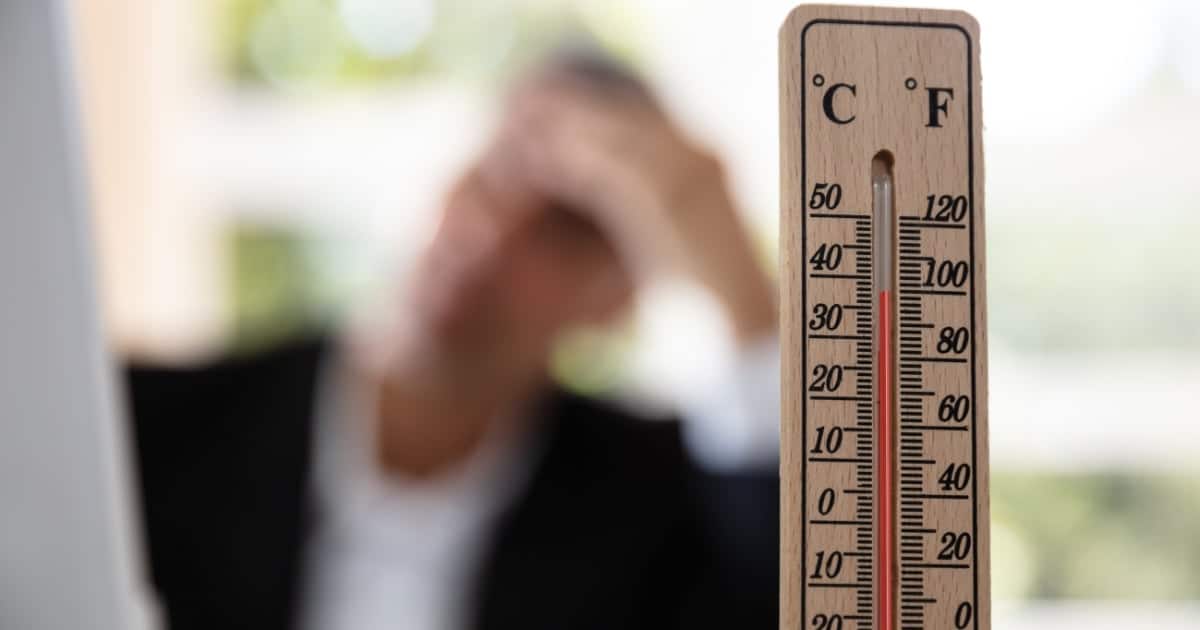When temperatures start rising, you may struggle to keep your blood sugars within a healthy range.
But does hot weather actually make your blood sugars go low, or does it just feel that way?
This article will explain the connection between hot weather and low blood sugar levels.

Table of Contents
- What causes blood sugars to go low?
- What are the symptoms of low blood sugar?
- Does summer heat make blood sugars go low?
- Preventing low blood sugar in the heat
- What is dangerously low blood sugar?
- What do I do if I can’t get my blood sugar up?
- Can low blood sugar be deadly?
- How can I stay healthy in the summer heat?
What causes blood sugars to go low?
Taking insulin can make blood sugar levels go low.
If this happens, it can mean that you’ve taken too much insulin for the food you’ve eaten, or you still have active insulin in your system before exercising.
Low blood sugar can also occur if you’ve forgotten to eat or if you experience hormonal changes that may make your body more insulin sensitive and prone to low blood sugar levels.
When people with diabetes take insulin, it is a constant balancing act of determining how much insulin they will need for the activities they do and the food they eat. This can be tricky!
Experiencing low blood sugar levels is common if you have diabetes. It is part of everyday life.
The average person with type 1 diabetes experiences two episodes of low blood sugar per week.
If you do not take insulin exogenously for your diabetes management, you may still experience low blood sugar levels from periods of fasting, eating lower carbohydrate meals, extensive exercise, and regular hormonal changes.
However, you’re not as prone to low blood sugar levels, and when you do experience low blood sugar, they’re less likely to be severe.
What are the symptoms of low blood sugar?
It is essential to know the signs and symptoms of low blood sugar levels. These include:
- Shakiness
- Dizziness
- Fatigue
- Confusion
- Sweating
- Rapid heart rate
- Nervousness
- Hunger
- Trouble concentrating
- Irritability
The symptoms of severe low blood sugar include:
- Slurred speech
- Confused thinking
- Unconsciousness
- Seizures
- Coma
- In rare instances, death
Call 911 if someone you know is experiencing severely low blood sugar.
Administer glucagon to help prevent coma and death.
This is considered a medical emergency that needs immediate attention and professional medical help.
Does summer heat make blood sugars go low?
It may seem like heat and humidity make your blood sugars crash, but that will only be possible if you have active insulin in your system.
Heat can, however, cause your blood vessels to dilate.
This increases insulin absorption, leading to lower blood sugar levels, and in some cases, a blood sugar crash.
You may be more likely to experience low blood sugar levels if you’re outside in the heat and humidity with active insulin on board.
This can also happen when you enter a hot tub, sauna, take a hot shower, or when your body temperature rises from exercise.
Preventing low blood sugar in the heat
There are several key ways to help prevent low blood sugar episodes from happening in the heat.
You may not be able to prevent all low blood sugars, but using the following strategies may help:
- It is best to stay out of the heat and humidity during the hottest times of the day
- When you’re in hot water, such as a hot tub or shower, make sure you do not have a lot of insulin in your system
- Eat an extra snack before going out into the heat, preferably something with fat and protein to help sustain your blood sugar level
- Drink plenty of water so you don’t get dehydrated
- Always double-check the amount of insulin you’re injecting twice before you take it
- Count carbohydrates so you have a better sense of how your snacks and meals will affect your blood sugar levels
- Wear a continuous glucose monitor that can closely track your blood sugar levels and you can treat low blood sugar before it becomes dangerous
- Avoid drinking alcohol, which is known to cause low blood sugar
- Keep an extra snack nearby to treat any emergency low blood sugar levels and carry glucagon wherever you go
What is dangerously low blood sugar?
Low blood sugar can be dangerous at any level. However, some people are able to function normally with lower blood sugars, while others cannot.
Anything under 40 mg/dL is considered a severely-low blood sugar level and puts you at a higher risk for seizures, diabetic coma, and death.
This severe low blood sugar requires immediate treatment with fast-acting glucose (like orange juice or sugar), or injectable glucagon if the person cannot chew or swallow.
Call 911 after administering glucagon if the person has a low blood sugar under 40 mg/dL.
What do I do if I can’t get my blood sugar up?
The Centers for Disease Control and Prevention (CDC) recommend treating low blood sugar levels with the 15-15 rule.
This entails eating or drinking 15 grams of carbohydrates and testing your blood sugar after 15 minutes to see if it has risen.
The CDC recommends repeating the process until your blood sugar is in a healthy range.
If you’re able to eat and drink, keep doing this until your blood sugar has risen.
Some examples of snacks that have 15 grams of carbohydrates include:
- Four ounces of juice or regular soda
- One tablespoon of sugar, honey, or syrup
- Three to four glucose tablets
- One tube of glucose gel
However, if you have a lot of insulin in your system or you’re unable to chew or swallow, this is when you should administer emergency injectable glucagon and call 911 for medical help.
Can low blood sugar be deadly?
Unfortunately, yes.
Many people who lose consciousness and fall into a diabetic coma from low blood sugar experience brain damage and sometimes death. This is rare, but it does happen.
This is why it is crucial to treat low blood sugars promptly before they become dangerous.
Always check your blood sugar before, during, and after you eat and exercise—especially during hot weather and the summer heat.
How can I stay healthy in the summer heat?
It is possible to stay healthy in the summer heat.
The following tips may help:
- Stay hydrated by drinking plenty of water (being dehydrated increases the likelihood that you’ll experience high blood sugar)
- Always wear sunscreen
- Wear a hat
- Stay in the shade
- Monitor your blood sugar levels, especially before, during, and after exercise
- Aim to exercise indoors, preferably in air-conditioning
- Always carry emergency low snacks with you
- Always carry glucagon with you
- Wear light, loose-fitting clothing that is breathable
- Keep your medications, especially insulin, in a cool place (never leave insulin in a hot car)
- Keep your diabetes supplies, including continuous glucose monitors (CGM) and insulin pump supplies, in a cool, dry place



